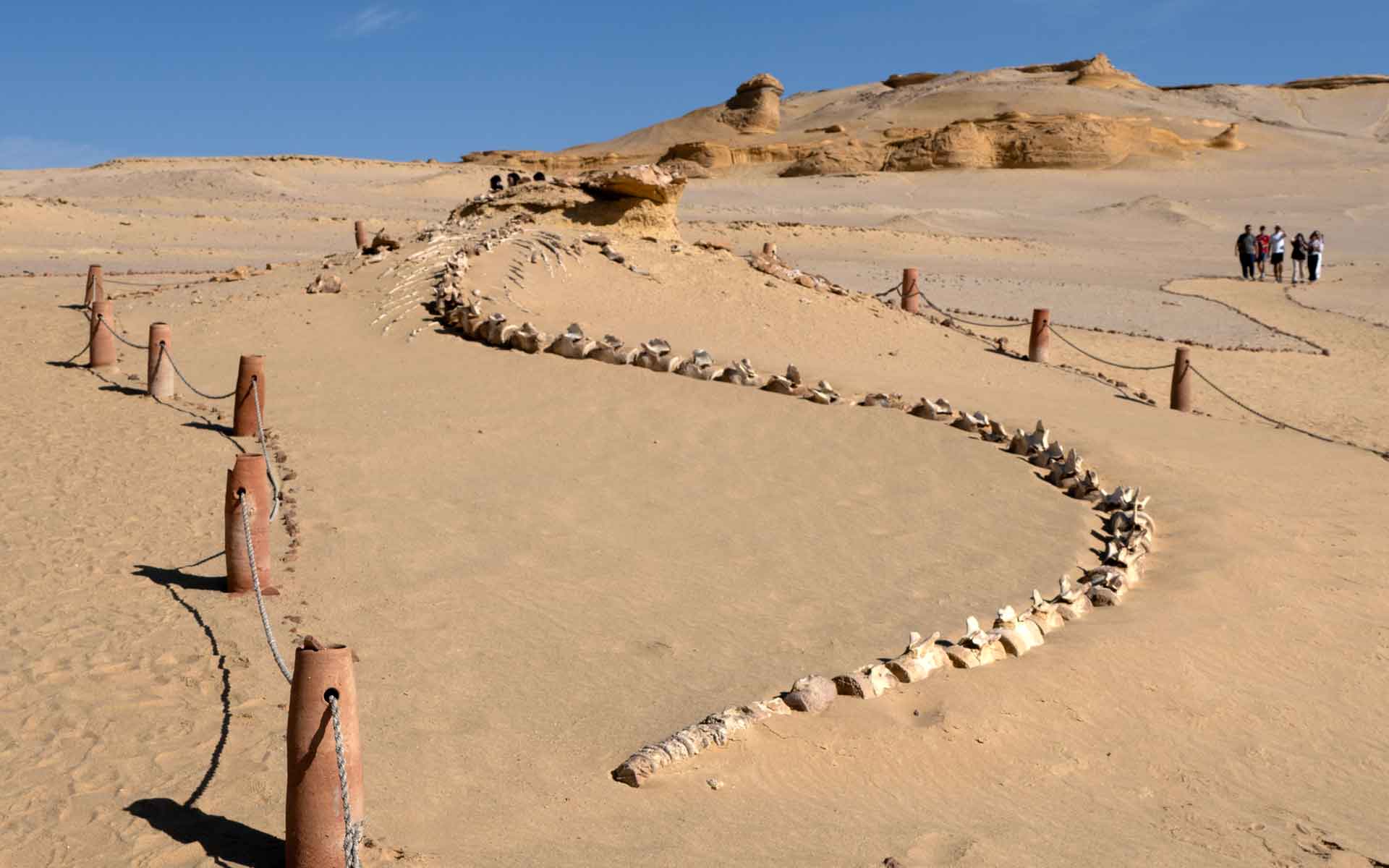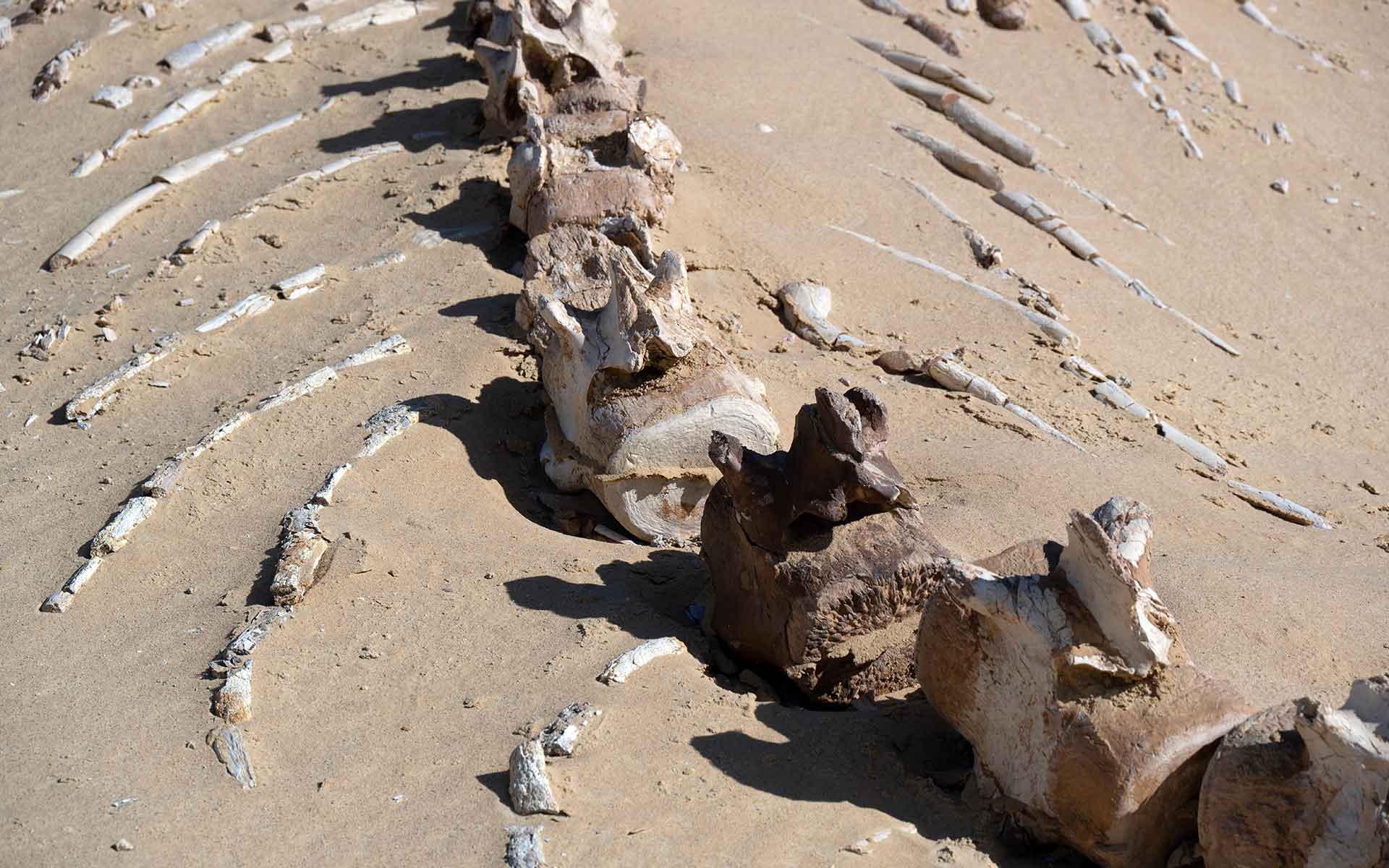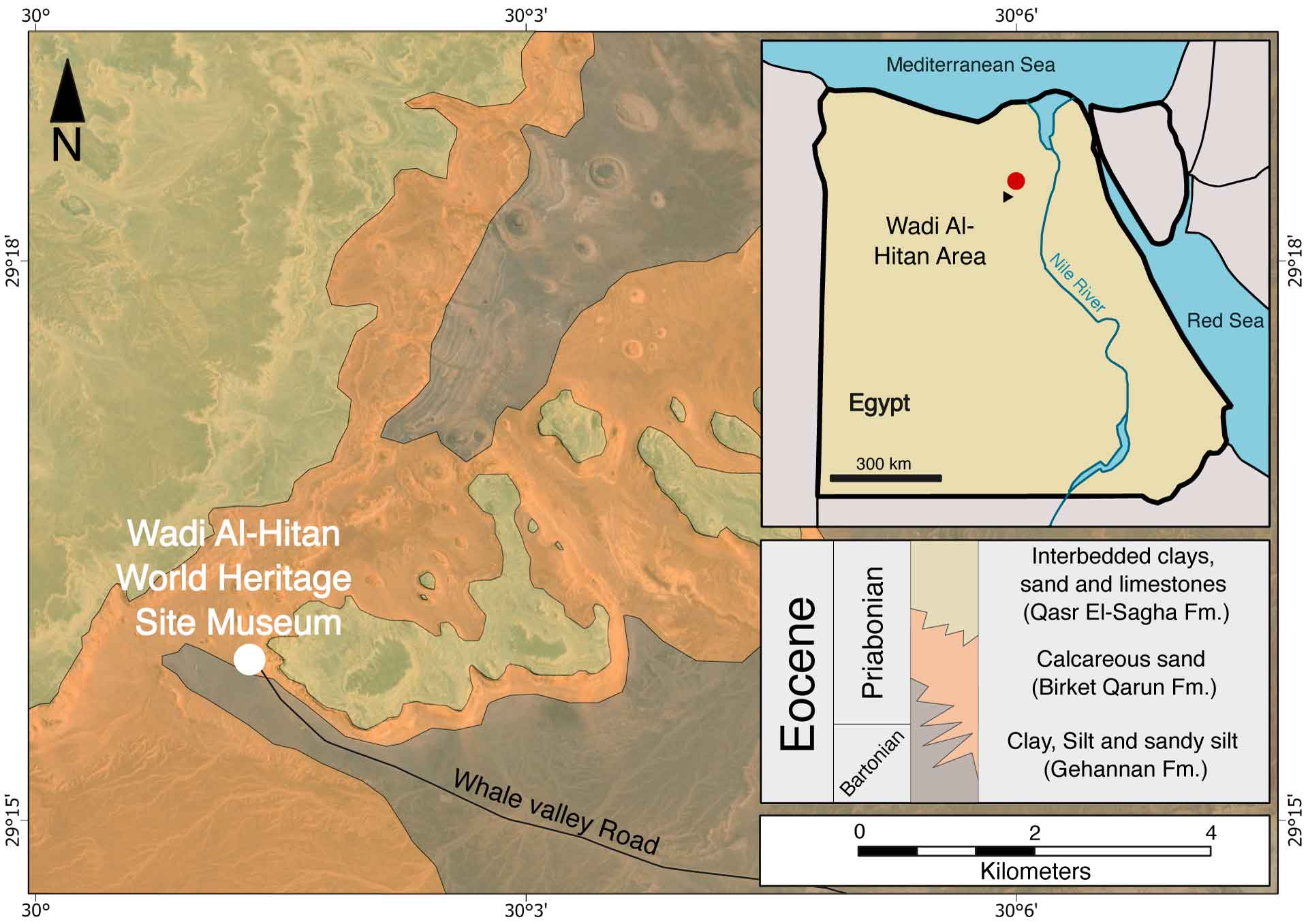Whale Valley, Cetacea and Sirenia Eocene fossils of Wadi Al-Hitan
Egypt

A complete Basilosaurus whale skeleton surrounded by hills. (Photo by Miguel Ángel Sainero).
Geological Period
Paleogene (Eocene)
Main geological interest
Paleontology
Stratigraphy and sedimentology
Location
Fayum province, Egypt
29°15’54”N, 030°01’20”E
A complete Basilosaurus whale skeleton surrounded by hills. (Photo by Miguel Ángel Sainero).
Hundreds of complete skeletons of the earliest whales along with fossils of mangrove roots.
In 2015 UNESCO and 2018 IUCN recognized Egypt’s initial natural world heritage site as a World Heritage Site, emphasizing its worldwide significance in understanding our planet’s biological history. The presence of whale skeletons, shark teeth, sirenians, and reptiles in this region provides a captivating glimpse into their evolutionary past, spanning 40 million years. Therefore, scientists highly regard this collection of whale fossils found in moon-like landscapes as a valuable scientific treasure. It provides unparalleled insights into the transition of whales from land-dwelling creatures to marine beings, as well as their migration patterns, evolution, and the environmental conditions that existed millions of years ago.
- Geological description
Wadi Al-Hitan “Valley of the Whales” serves as an extraordinary paleontological site situated in the Fauym Governorate of Egypt. It is an exceptional record of the ancient history of our planet when marine life flourished along the coast and the mysterious migration of whales took place. Researchers in Wadi Al-Hitan have discovered numerous fossils of archaeoceti, an extinct sub-order of whales that includes some of the earliest species of whales. Specimens are impressive, and the largest skeleton discovered has a length of 21 meters. These fossils offer vital evidence for unraveling one of the most significant enigmas in the evolution of whales: their transition from terrestrial creatures to marine mammals. Remarkably, the fossils preserve primitive features in their skull and tooth structure. Certain skeletons within the study of archaeoceti exhibit hind legs, feet, and toes, which is an unforeseen discovery. These fossils not only shed light on the evolution of whales but also provide insights into the surrounding environmental conditions millions of years ago. The present landscape, resembling the moon’s surface and scattered with fossil remains, encourages us to delve into the captivating narrative of Earth’s gradual evolution. This exceptional area was officially recognized as a UNESCO World Heritage Site because of an exceptional scientific treasure due to the unparalleled abundance and quality of whale fossils.
- Scientific research and tradition
Beadnell (1905) discovered Basilosaurus, the first fossil whale. After a revival of research, the site was designated as a Special Protected Area within the Wadi El-Rayan Protected Area in 1997. In 2005, the site was added to the World Heritage list under Natural Criterion viii for the hundreds of fossils of archaeoceti.
- Reference
Ahmed, E.A. (2006) Vertebrate paleontological studies on some paleogene outcrops in fayum area, Egypt. M.Sc. Thesis,. Mansoura university, faculty of science, department of geology. Available at: http://srv3.eulc.edu.eg/eulc_v5/Libraries/Thesis/BrowseThesisPages.aspx?fn=PublicDrawThesis&BibID=263758.
Andrews, C.W. (1906) A descriptive catalogue of the Tertiary Vertebrata of the Fayûm, Egypt. London : British Museum (Natural hist.). Available at: http://archive.org/details/descriptivecatal00andr.
Gingerich, P.D. (1992) ‘Marine Mammals (Cetacea and Sirenia) from the Eocene of Gebel Mokattam and Fayum, Egypt: Stratigraphy, Age and Paleoenvironments’. Available at: http://deepblue.lib.umich.edu/handle/2027.42/48630.
Gingerich, P.D. et al. (1994) ‘Cranial Morphology of Protosiren fraasi (Mammalia, Sirenia) from the Middle Eocene of Egypt: A New Study Using Computed Tomography’. Available at: http://deepblue.lib.umich.edu/handle/2027.42/48641.
King, C., Underwood, C. and Steurbaut, E. (2014) ‘Eocene stratigraphy of the Wadi Al-Hitan World Heritage Site and adjacent areas (Fayum, Egypt)’, Stratigraphy, 11, pp. 185–234.
Uhen, M.D. (2004) Form, function, and anatomy of Dorudon atrox (Mammalia, Cetacea): an archaeocete from the middle to late Eocene of Egypt. Ann Arbor, Mich: University of Michigan (Papers on paleontology, no. 34).
Zalmout, I. and Gingerich, P. (2012) ‘Late Eocene Sea Cows (Mammalia, Sirenia) From Wadi Al Hitan In The Western Desert of Fayum, Egypt’, Univeristy of Michigan Papers on Paleontology, 37, pp. 1–158.
- Author(s)
Enas Abd Elhady Ahmed.
Faculty of Petroleum and Mining Science, University of Matrouh. Egypt.

